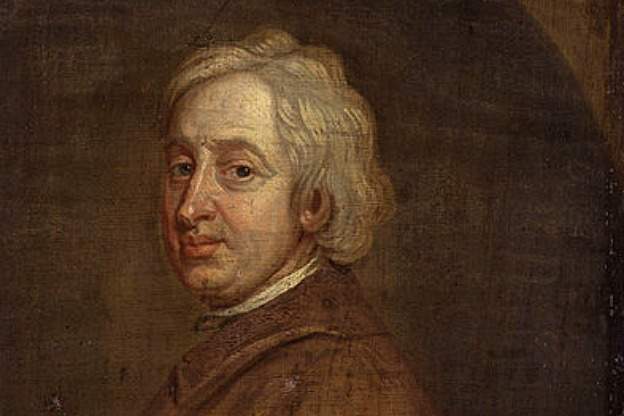
In the same year that English explorer William Dampier became the first known European to visit the island of New Britain in Papua New Guinea, musician Michel Blavet was born. Blavet’s prodigious musical talent enabled him to become proficient at numerous instruments; although, he ultimately chose to specialize in the flute and bassoon. He soon became known as the finest flutist in France, praised highly by the likes of Voltaire and German music critic and composer Friedrich Wilhelm Marpurg. Blavet was hired as a musician for the Duke of Carignan and the Count of Clermont. His most prestigious positions were attained from 1738 onward. At that time, Blavet served as principal flutist for Louis XV’s Musique du Roi, as well as the Paris Opera. His vocational success enabled him to turn down a position at the court of Frederick the Great. That appointment was subsequently taken up by Blavet’s friend and colleague Johann Joachim Quantz.
In 1700 London, the illustrious poet John Dryden died. At the time of the Restoration, the highly learned Dryden established himself as one of England’s leading literary voices. He worked as both literary critic and playwright, composing comedic plays charged with the chief political issues of his day. Dryden’s satirical works established the heroic couplet as the standard form of English poetry. This poetic style served to inspire generations of 18th- and 19th-century poets, including Samuel Johnson and Alexander Pope.
In Naples, engineer and architect Luigi Vanvitelli was born in 1700. The son of a Dutch painter, Luigi received training in art as a youth. He travelled to Rome and studied with architect Nicola Salvi, collaborating on projects such as the Trevi Fountain. Vanvitelli also designed facades for St. John Lateran’s archbasilica, the Palazzo Poli. His most ambitious commission was the Palace of Caserta, one of 18th-century Europe’s largest buildings. Vanvitelli devoted himself to the design and construction of the palace from 1752 until his death in 1773.
The year 1700 also saw the birth of Gerard van Swieten, a physician and vampire hunter for Austrian Empress Maria Theresa. In 1755, van Swieten was sent by the empress to investigate purported sightings of vampires in parts of rural Austria. To combat the superstition, van Swieten published a report in which he qualified vampire sightings as no more than “a vain fear, a superstitious credulity, a dark and eventful imagination, simplicity and ignorance among the people.”
In Berlin in 1700, Prince-elector Frederick III founded the Prussian Academy of Sciences. The decision to establish an academy devoted to both the sciences and the humanities was prompted by the suggestion of philosopher Gottfried Leibnitz. The academy’s centuries-long history featured ground-breaking intellectual contributions by members such as Pierre-Louis de Mauperthuis, Étienne de Condillac, and Immanuel Kant. During World War II, the academy’s Jewish members and employees were expelled. Further reorganization occurred under the post-war Soviet Military Administration. Following German Reunification, the academy was finally disbanded, and the Berlin-Brandenburg Academy of Sciences and Humanities was established in its place.









